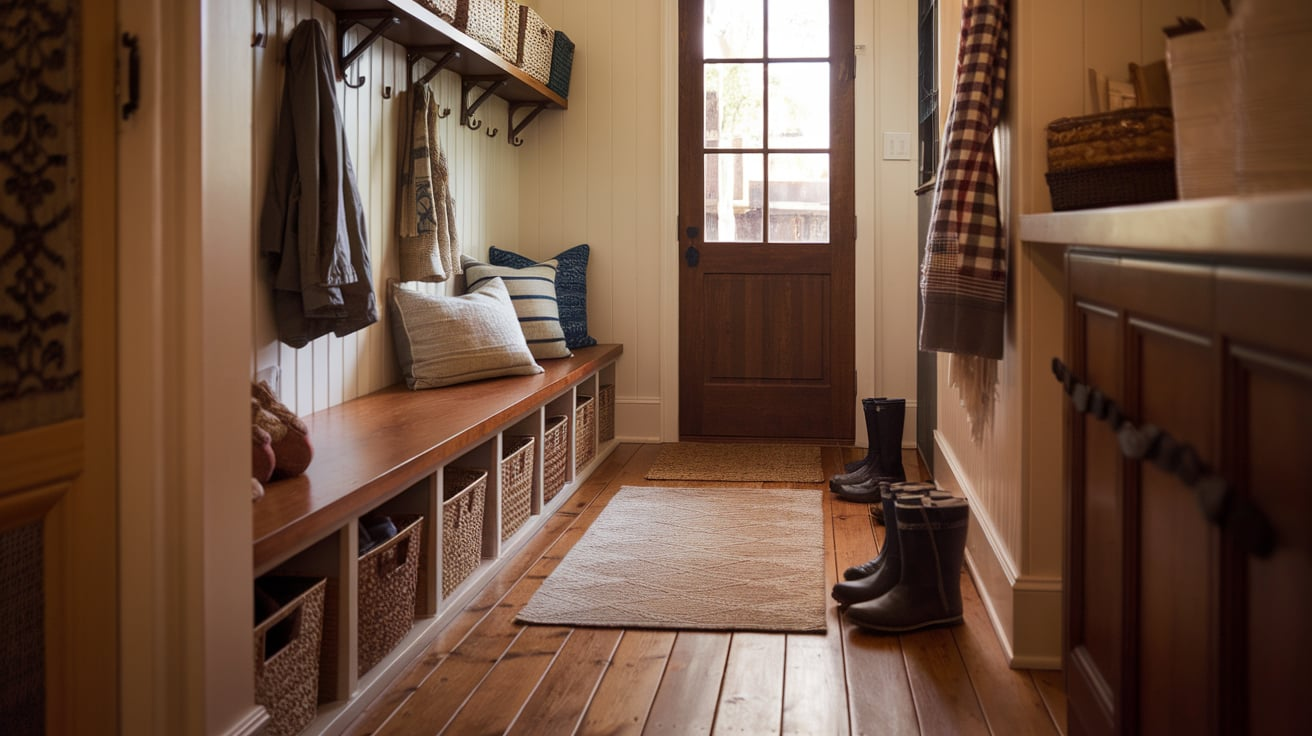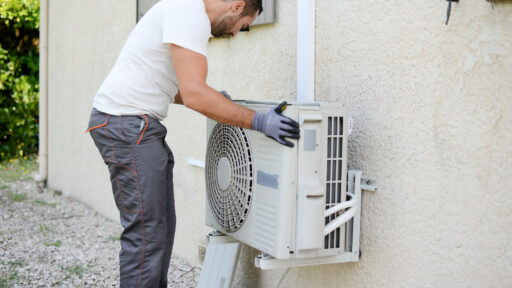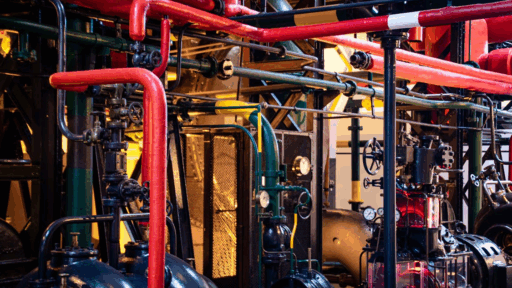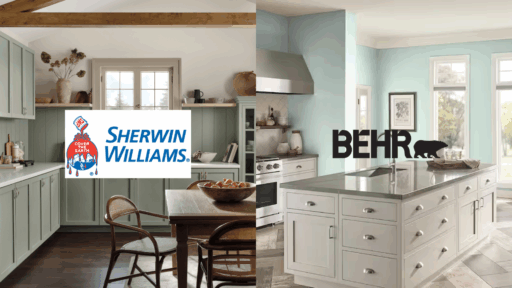When I was redoing my mudroom, I quickly realized how important the right flooring really is.
This space takes a beating, muddy boots, wet coats, and dirty paws all land here first.
I needed something that could handle all of it without falling apart or looking worn out. That’s when I started digging into the best flooring options for mudrooms.
I wanted something strong, easy to clean, and still nice to look at. If you’re in the same boat, don’t worry, I’ve got you covered.
In this post, I’ll walk you through the top flooring types that work great for mudrooms.
I’ll talk about what makes each one a good choice and help you figure out what fits your home best.
So grab a coffee, and let’s find the perfect floor for your hardworking space.
Why Mudroom Flooring Matters?
Your mudroom is the first line of defense between the outdoors and the rest of your home.
It’s where muddy boots, wet umbrellas, snowy shoes, and even pet paws come in every day.
That means the floor in this space takes more wear and tear than most other rooms.
If you pick the wrong type, it could lead to water damage, stains, scratches, or even mold.
Good mudroom flooring helps protect your home. It keeps things easy to clean, safe to walk on, and tough enough to last through every season, rain, snow, or sun.
The right floor can also make the space look more put-together and welcoming, even if it’s just a small corner by the back door.
So choosing the right material isn’t just about looks, it’s about function, safety, and long-term savings.
Top Mudroom Flooring Options
When it comes to flooring for mudrooms, not all materials are created equal. You need something that can handle moisture, dirt, and heavy foot traffic without falling apart or looking messy.
1. Porcelain or Ceramic Tile
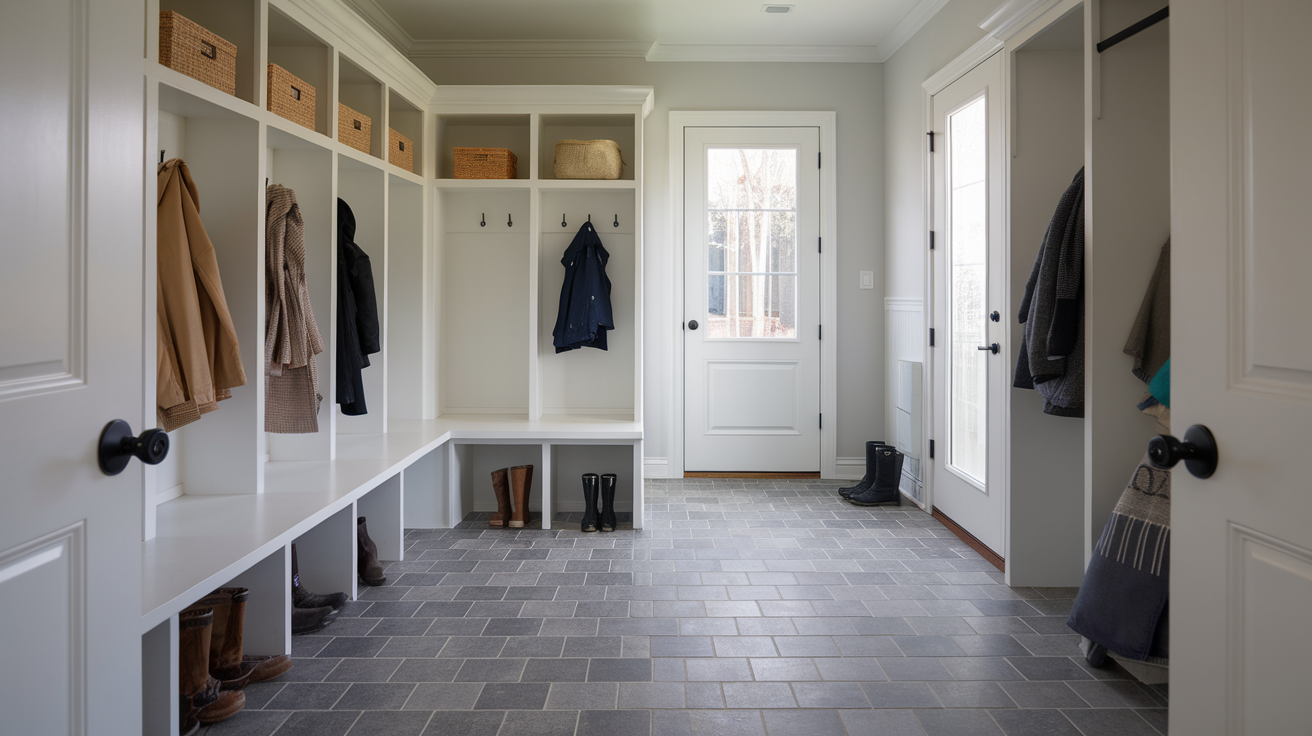
Porcelain and ceramic tiles are incredibly tough and highly water-resistant.
These tiles don’t scratch easily, they don’t stain, and they hold up well under wet and dirty conditions.
For homes that deal with snow, rain, or lots of foot traffic, tile can be a great long-term choice.
Pros:
- Extremely durable and long-lasting
- Easy to wipe clean or mop
- Available in countless colors, sizes, and patterns
- Resistant to water, mud, and pet messes
Cons:
- Grout can get dirty and may need sealing
- Can feel cold underfoot (area rugs or heated floors help)
- Hard surface, not as comfortable to stand on
Design tip: Go with a matte or textured finish to reduce slipping. You can even find tile that looks like wood for a cozy but practical look.
2. Luxury Vinyl Tile (LVT) or Planks (LVP)
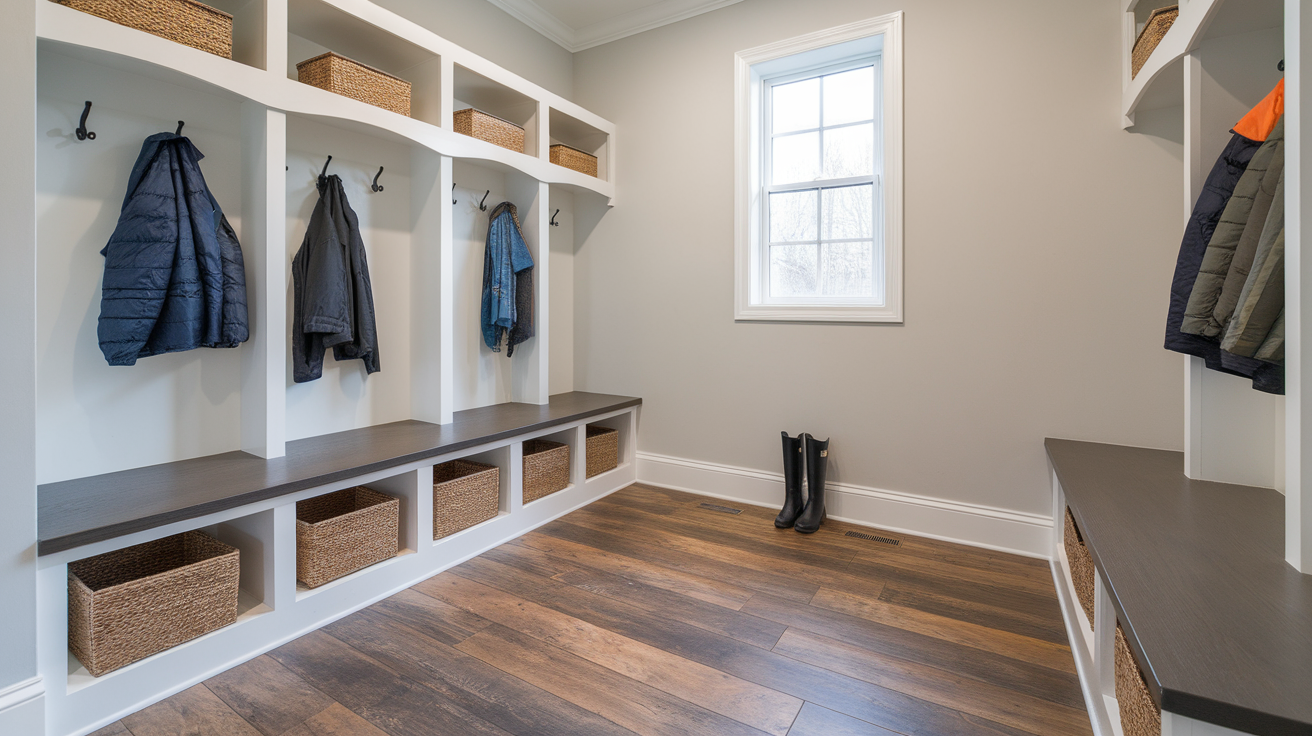
Luxury vinyl is one of the most popular flooring choices for mudrooms today. It’s waterproof, tough, and comes in designs that mimic hardwood, stone, or tile.
I was impressed by how real some of the wood-look planks actually felt. It’s a great option if you want something stylish without sacrificing performance.
Pros:
- Fully waterproof, ideal for wet shoes and pets
- Softer and warmer underfoot than tile
- Easy to install, even DIY-friendly
- Low maintenance and simple to clean
Cons:
- May dent with heavy furniture
- Some lower-end brands might fade or wear faster
Design tip: Choose planks with a textured finish and a thicker wear layer (20 mil or more) for extra durability in high-traffic zones.
3. Natural Stone (Slate, Granite, or Travertine)

Stone is timeless and durable. Slate is especially popular for mudrooms because of its natural grip and textured surface.
While more expensive than other options, natural stone adds serious value and beauty to a space. I personally love the earthy tones and rugged texture.
Pros:
- Very durable and tough under pressure
- Unique, organic look
- Handles moisture well when sealed properly
- Long-lasting with proper care
Cons:
- High cost upfront
- Needs sealing to prevent stains and damage
- Can be slippery if polished
Design tip: Stick with honed or textured finishes to avoid slips. Darker stones hide dirt better, too.
4. Concrete
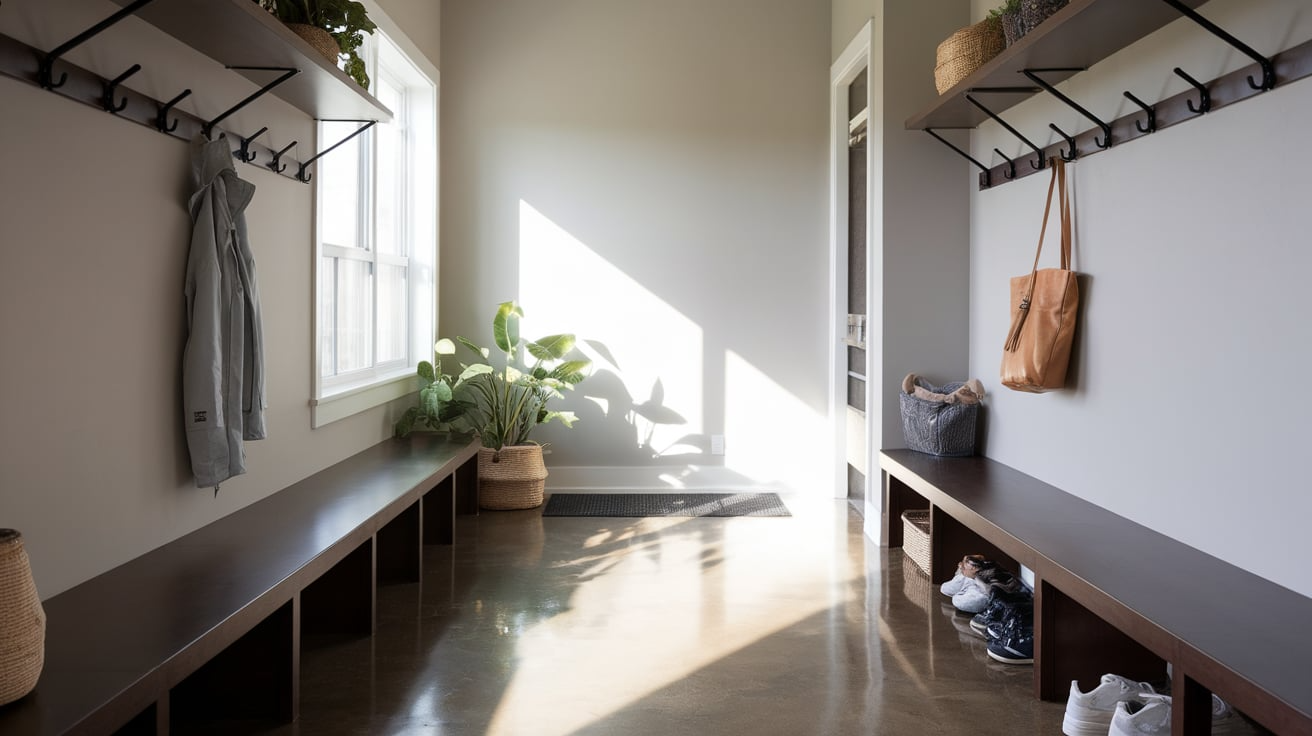
Concrete is a super-strong and practical choice, especially if your mudroom is part of a garage or basement entry.
It’s naturally moisture-resistant, low-maintenance, and budget-friendly.
While it may not sound fancy, you can customize it with stains, paint, or overlays.
Pros:
- Budget-friendly and long-lasting
- Can be stained or stamped for decorative looks
- Very easy to clean
- Great for indoor-outdoor spaces
Cons:
- Cold and hard underfoot
- Can crack over time without proper prep
- Basic concrete may look industrial or plain
Design tip: Add a colorful epoxy coating or decorative stain to dress up the look and improve resistance to scratches.
5. Rubber Flooring

Rubber is slip-resistant, waterproof, and soft to walk on. It’s commonly used in gyms, but it’s great for mudrooms too, especially homes with kids or dogs.
I’ve seen people use rubber tiles or rolls for a cushy and safe floor that handles all kinds of abuse.
Pros:
- Non-slip surface, safe for wet conditions
- Very comfortable and cushioned
- Water- and stain-resistant
- Easy to cut and install
Cons:
- Limited design options (usually solid colors)
- Can have a rubbery smell at first
- Not as “stylish” as other options
Design tip: Use interlocking rubber tiles for easy updates. Combine with rugs or mats to soften the look.
6. Engineered Hardwood
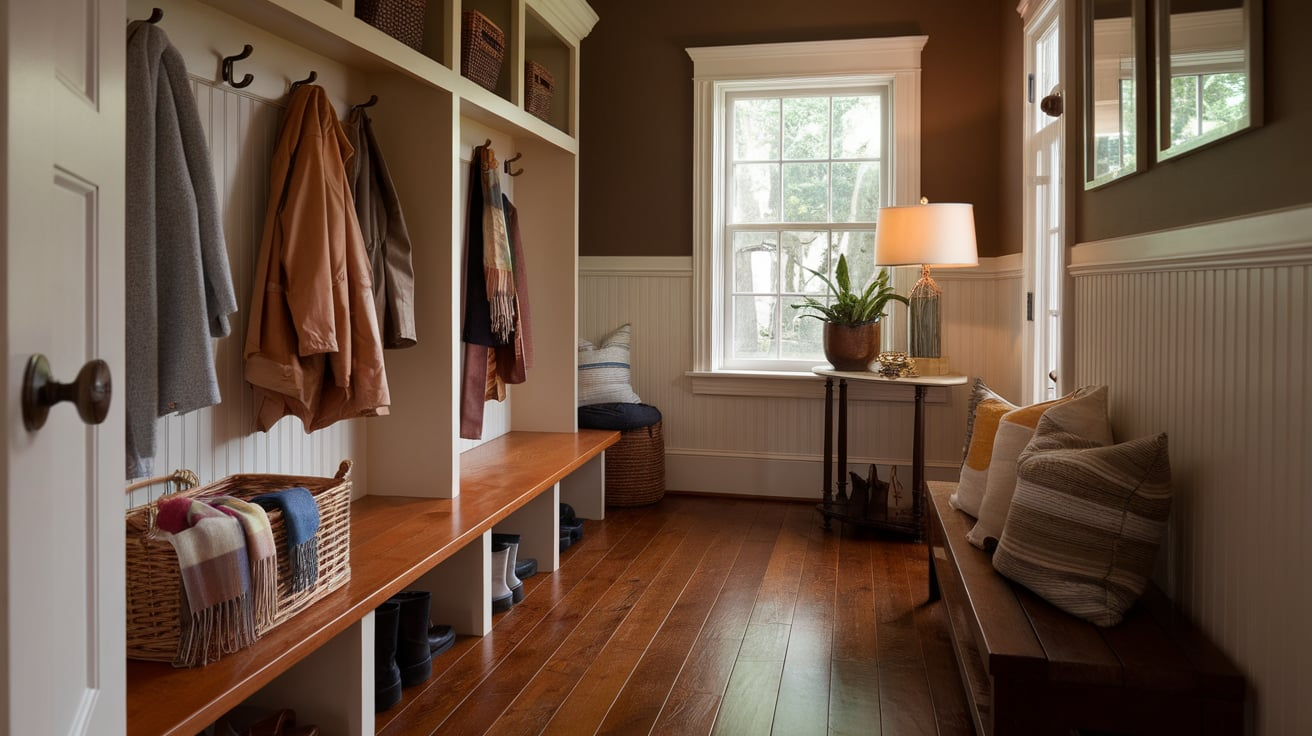
If you love the warmth and charm of wood but worry about moisture, engineered hardwood offers a balanced solution.
It’s more stable than solid hardwood and less likely to warp in humid conditions.
I’d only recommend this if you don’t get a ton of snow or mud, though.
Pros:
- Looks just like real hardwood
- More resistant to humidity than solid wood
- Adds warmth and style to your entryway
Cons:
- Can still be damaged by standing water
- Needs regular care and protection from dirt
- More expensive than vinyl or tile
Design tip: Use a tough finish and place a large entry mat to protect high-traffic areas. Sweep frequently to avoid scratches.
7. Sheet Vinyl
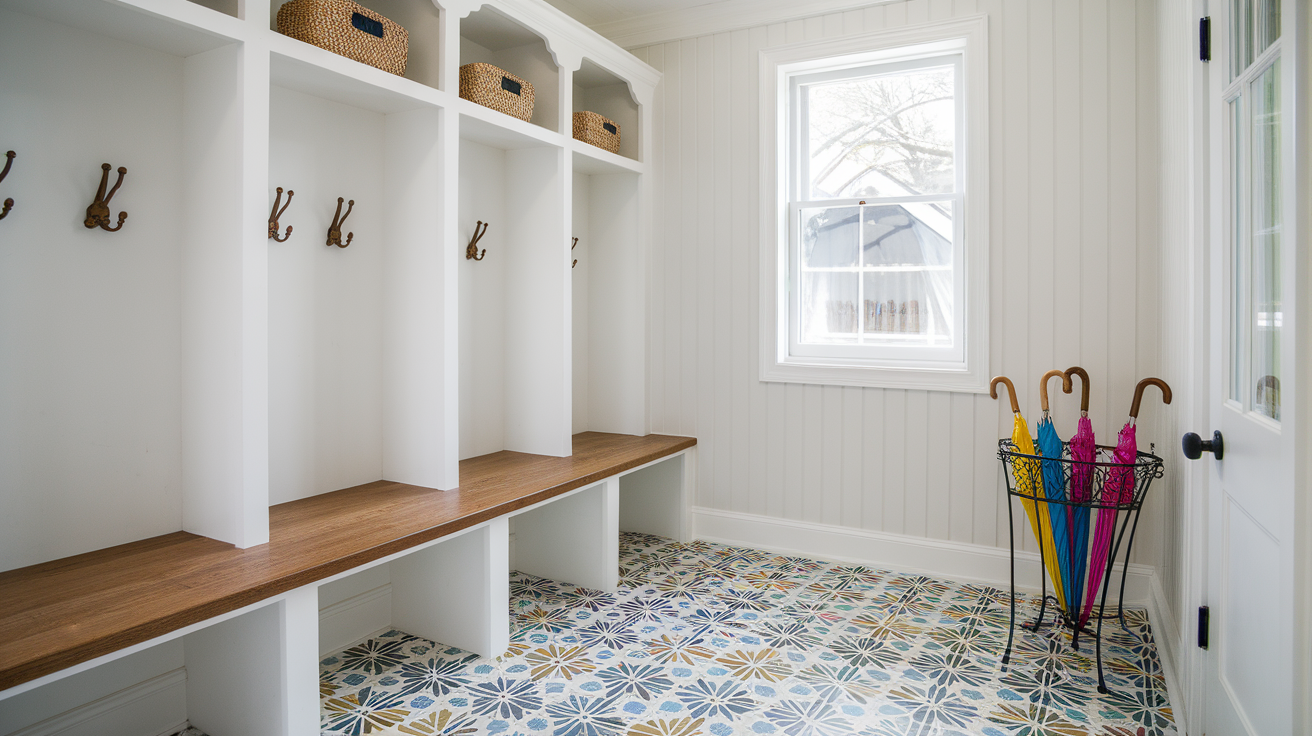
Sheet vinyl is an affordable, waterproof choice that’s perfect for large or oddly shaped mudrooms.
It has fewer seams than tile or plank options, which means less chance for water to seep underneath.
Pros:
- Seamless coverage
- Totally waterproof
- Very affordable
- Available in many patterns
Cons:
- It can look outdated if not carefully chosen
- Harder to replace if damaged
- Less durable than LVT
Design tip: Choose modern patterns like stone or concrete looks for a stylish touch that feels current.
8. Cork Flooring
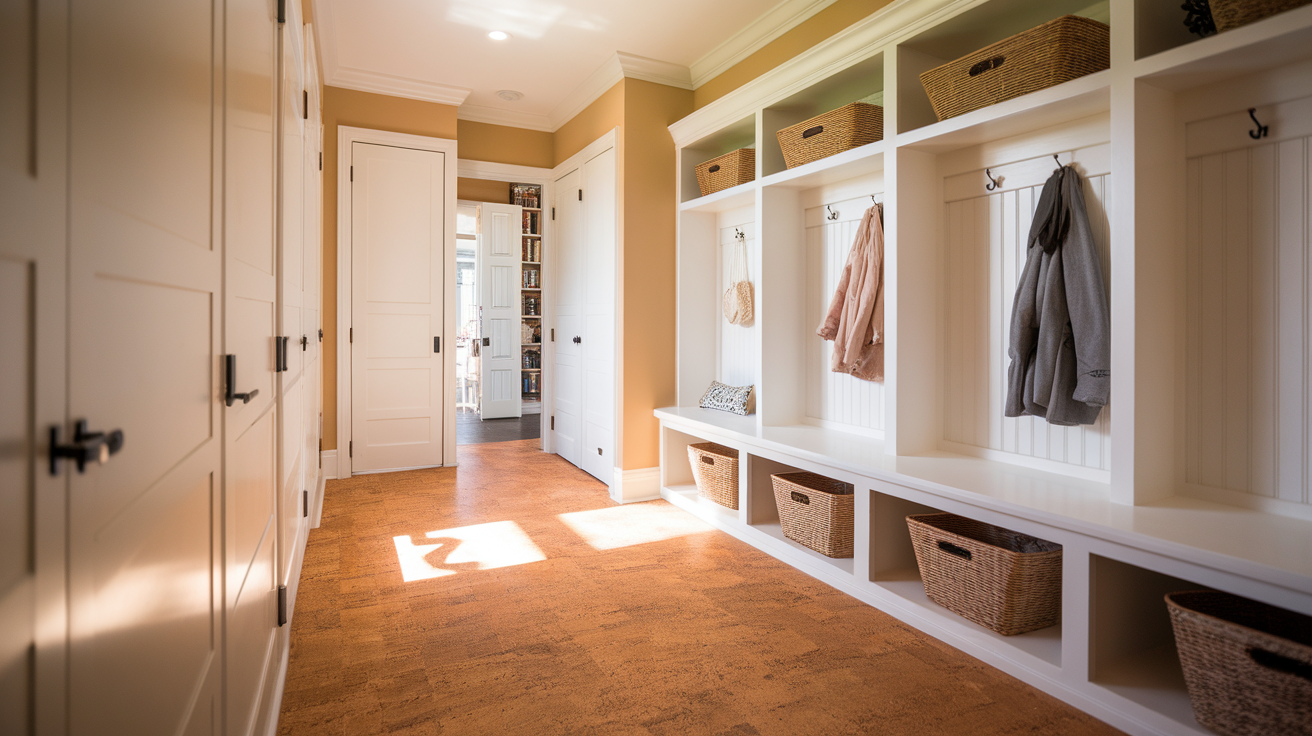
Cork is soft, eco-friendly, and naturally resistant to mold and mildew. It’s a cozy choice that adds warmth and comfort to a mudroom, especially in colder climates.
Its slightly cushioned surface makes it great for standing or walking barefoot, and it helps reduce noise in busy households.
Pros:
- Comfortable and soft underfoot
- Naturally antimicrobial and mold-resistant
- Provides insulation and sound absorption
Cons:
- Needs sealing to protect against moisture
- Can dent or scratch under heavy items
Design tip: Choose darker cork tones or patterned tiles to help hide dirt and wear.
9. Bamboo Flooring
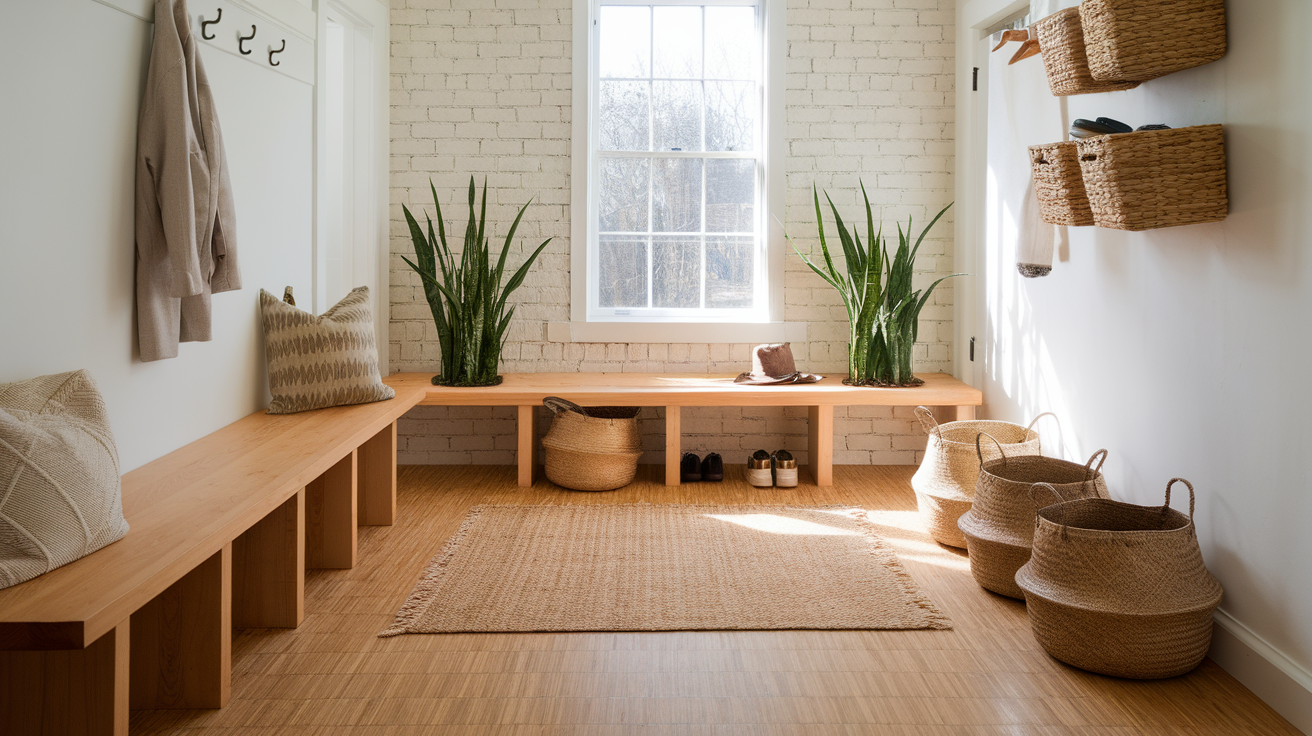
Bamboo is a renewable and durable flooring option that adds a natural, clean look to any mudroom.
Strand-woven bamboo is especially tough and can handle heavy foot traffic without scratching easily.
It’s also more stable than traditional hardwood, making it a solid pick for homes in varying climates.
Pros:
- Eco-friendly and sustainable
- Scratch-resistant (strand-woven type)
- Stylish natural wood look
Cons:
- Sensitive to moisture if not sealed well
- Can swell or warp in very humid climates
Design tip: Go for engineered bamboo planks for better water resistance in mudrooms.
10. Peel-and-Stick Vinyl Tiles
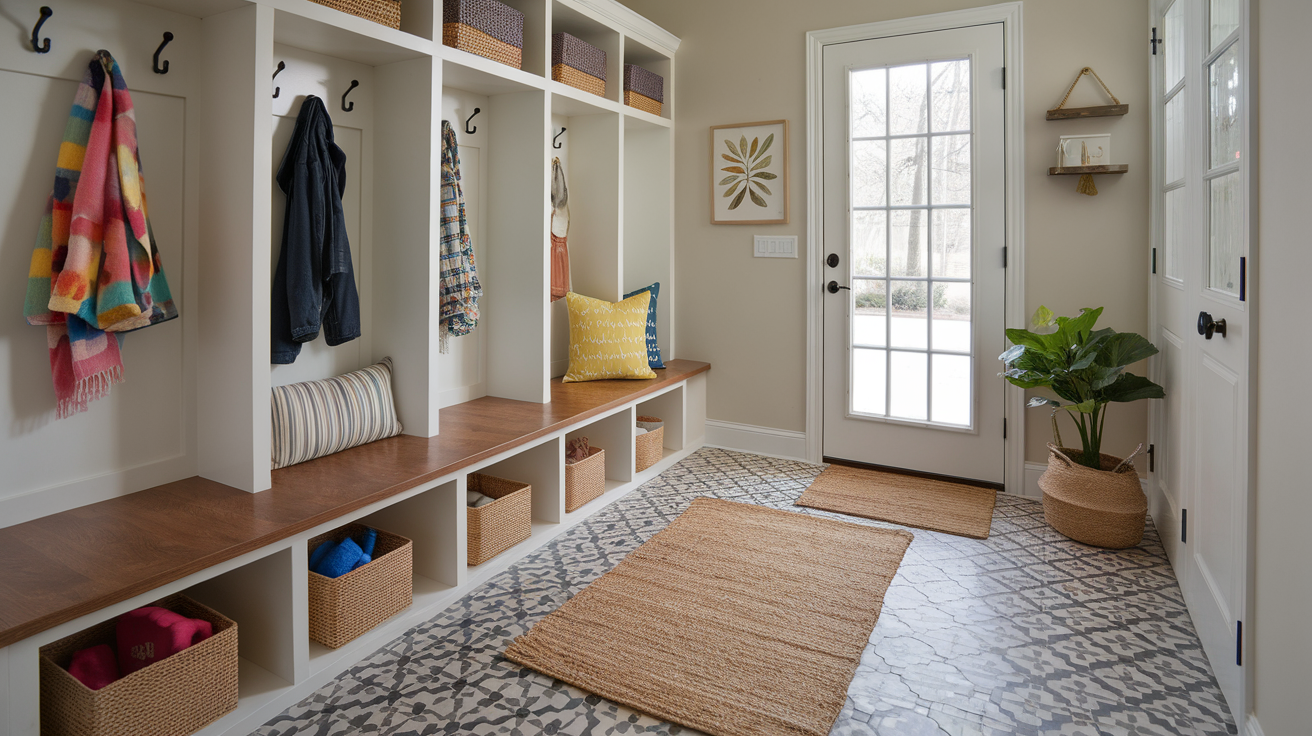
Easy to install and budget-friendly, peel-and-stick tiles are great for quick upgrades or temporary solutions in a mudroom.
They come in a wide range of colors and patterns, giving you the freedom to refresh your space without a big commitment.
Plus, damaged tiles can be replaced one at a time if needed.
Pros:
- Very affordable
- DIY-friendly and simple to replace
- Comes in many designs and finishes
Cons:
- Less durable than standard vinyl
- May lift or peel in very wet areas
Design tip: Use a moisture-resistant adhesive or top coat if you expect wet conditions.
11. Terrazzo
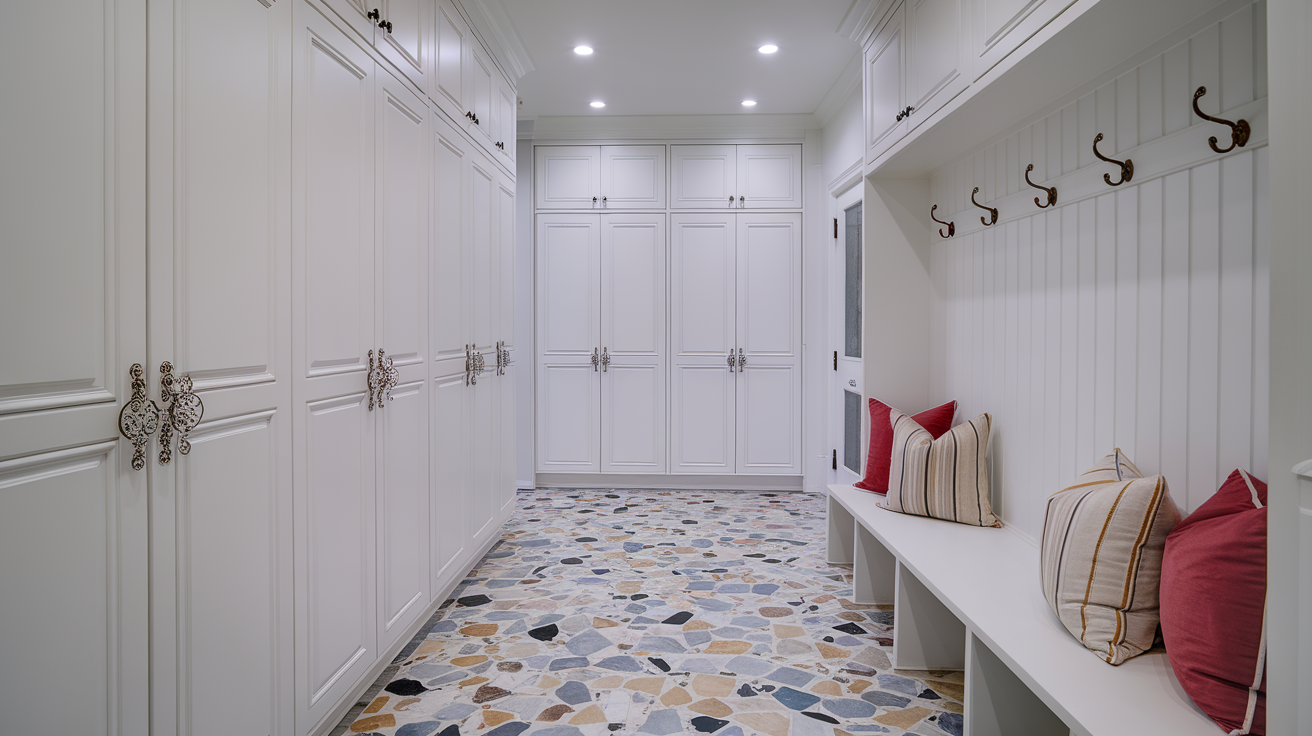
Made from chips of marble, quartz, and stone, terrazzo is both stylish and strong, great for high-traffic areas like mudrooms.
Pros:
- Extremely durable and long-lasting
- Customizable patterns and colors
- Water-resistant when sealed
Cons:
- Expensive to install
- Can be slippery when wet
Design tip: Add a slip-resistant finish or area rug to reduce slipping in wet weather.
12. Brick Pavers
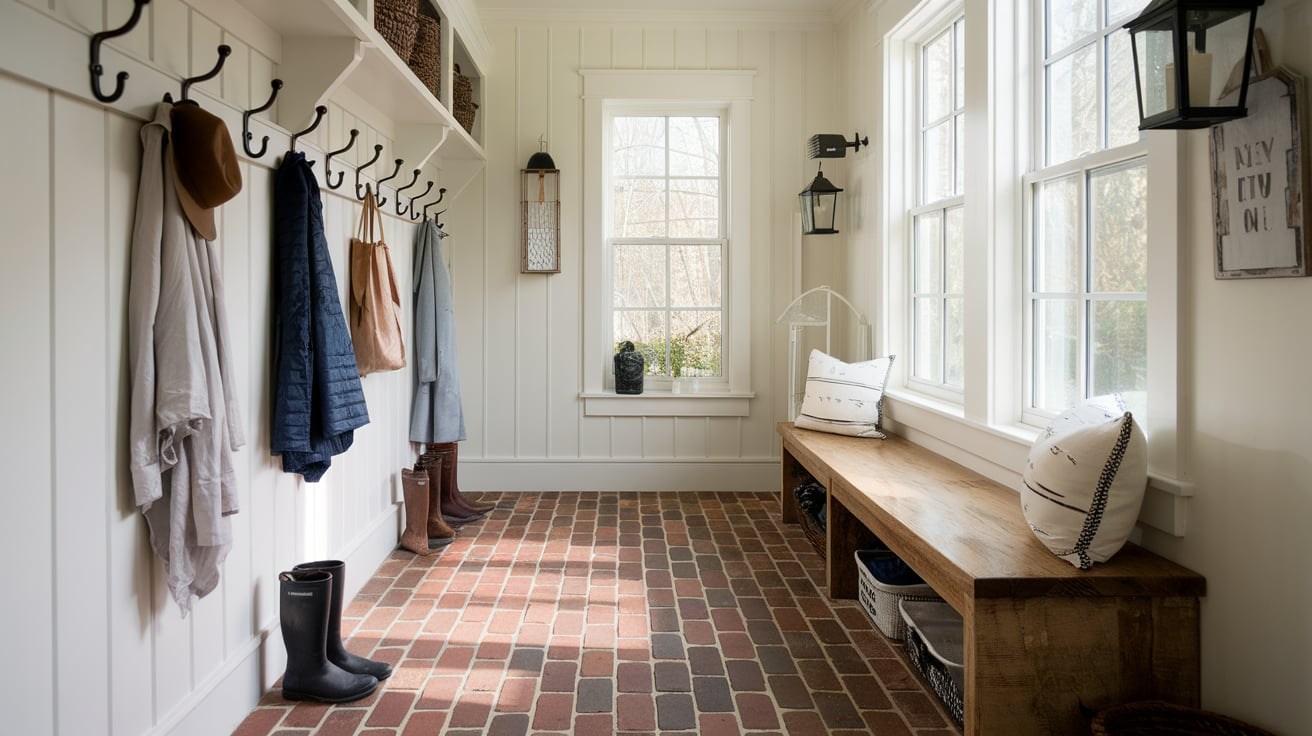
Brick brings a rustic, classic feel and stands up well to dirt and grit, making it both stylish and practical.
It’s a great choice for mudrooms with a farmhouse or vintage vibe, offering natural texture and warmth.
Brick’s rough surface also provides good traction in wet or snowy conditions.
Pros:
- Very durable and textured
- Hides dirt and scuffs well
- Adds charm and character
Cons:
- Requires sealing to prevent water damage
- An uneven surface can be tricky to clean
Design tip: Use larger format bricks with minimal gaps for easier cleaning.
13. Painted Wood

If your mudroom already has wood floors, painting them with a durable, moisture-resistant paint can give them a fresh, updated look.
It’s an affordable way to extend the life of existing flooring while adding color and personality. With the right prep and sealer, painted wood can hold up well in everyday use.
Pros:
- Budget-friendly update
- Easy to refresh with a new color
- Maintains wood’s charm
Cons:
- Not ideal for very wet conditions
- Paint can chip or wear with time
Design tip: Use porch or floor paint with a top sealer for extra durability.
14. Encaustic Cement Tile
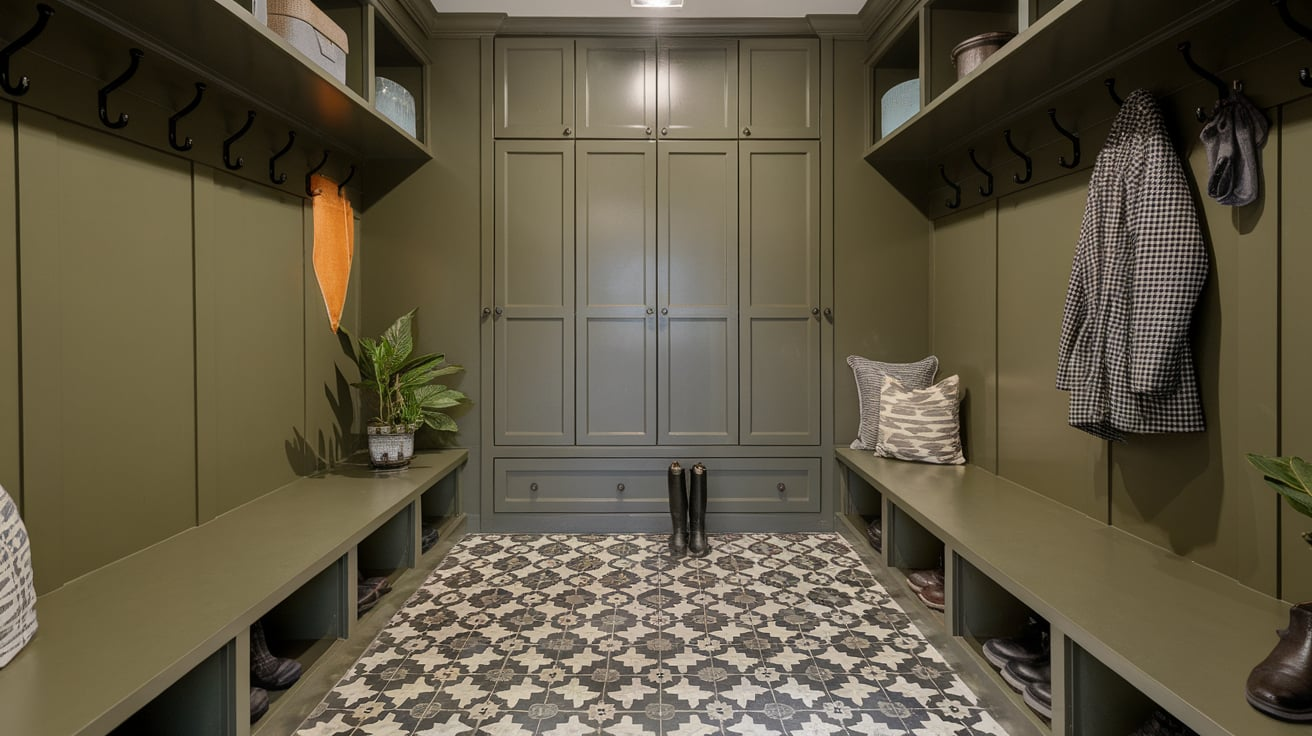
These patterned tiles are bold and beautiful, offering both personality and toughness for high-traffic mudrooms.
Made from durable cement, encaustic tiles hold up well under daily wear while adding a unique, handcrafted touch.
They’re especially fitting for vintage, Mediterranean, or eclectic design styles.
Pros:
- Decorative and stylish
- Strong and long-lasting
- Unique hand-crafted look
Cons:
- Must be sealed regularly
- Can be pricey and heavy
Design tip: Use as a statement floor in smaller mudrooms for a big visual impact.
15. Carpet Tiles (Indoor/Outdoor)
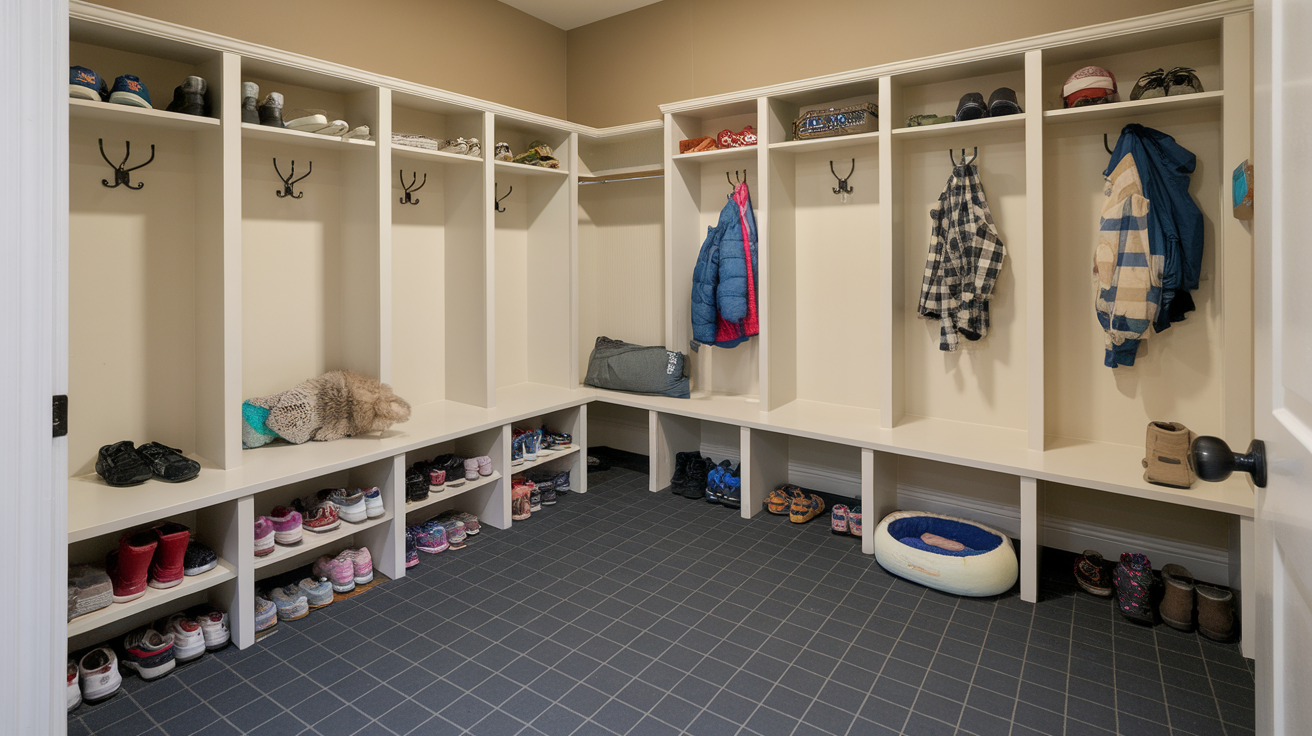
For families with kids or pets, indoor-outdoor carpet tiles offer softness, traction, and easy maintenance.
Pros:
- Soft underfoot and slip-resistant
- Easy to replace individual tiles
- Designed to handle moisture and dirt
Cons:
- Not 100% waterproof
- May hold onto stains if not cleaned quickly
Design tip: Choose darker colors or patterned tiles to hide messes between cleanings.
Each of these options comes with its own set of benefits and drawbacks. Think about your lifestyle, climate, and budget when deciding.
For me, luxury vinyl felt like the sweet spot: affordable, durable, and good-looking. But you might prioritize something totally different, like real stone or easy-clean tile.
There’s no single right answer, just the right floor for your home.
Factors to Consider When Choosing Mudroom Flooring
| Factor | Why It Matters |
|---|---|
| Durability | Handles heavy foot traffic, muddy boots, and daily wear and tear. |
| Water Resistance | Essential for wet shoes, snow, and spills—prevents water damage. |
| Ease of Cleaning | Quick to sweep or mop with minimal effort. |
| Slip Resistance | Keeps your mudroom safe during wet conditions—textured surfaces help prevent falls. |
| Stain Resistance | Resists marks from dirt, salt, and pet messes. |
| Comfort Underfoot | Softer materials like vinyl or rubber are better if you stand in the mudroom often. |
| Style and Appearance | It should match the overall look of your home or entry area. |
| Climate Suitability | Some flooring types handle cold, snow, or humidity better than others—choose what fits your region. |
| Budget | Choose a floor that fits your price range without sacrificing too much quality. |
Mudroom Flooring: Installation and Maintenance Tips
Keeping your mudroom floor strong and clean doesn’t have to be hard. Here are a few quick tips to help you get it right from the start and keep it looking good.
- Seal grout or stone to protect against moisture and stains.
- Use a moisture barrier under floors if you live in a wet or snowy area.
- Hire a pro for tricky materials like tile or stone to avoid problems later.
- Sweep often to stop dirt and grit from scratching the floor.
- Place doormats to catch water and mud at the door.
- Wipe up spills quickly to prevent slipping or damage.
A little prep and regular care go a long way in making your mudroom floor last.
Conclusion
After looking at all the flooring options, I can say that picking the right one for your mudroom makes a big difference.
I didn’t realize how much wear and tear this space goes through until I started paying attention.
Water, dirt, and heavy foot traffic can really take a toll. That’s why I looked for something strong, easy to clean, and good-looking too.
If you’re planning a new floor for your mudroom, think about your climate, budget, and how much mess your family brings in every day.
It doesn’t have to be fancy, just practical and tough enough to handle daily life. I hope this guide gave you the ideas you need to find the best fit.
A smart flooring choice can make your mudroom work harder and look better at the same time, and that’s a win in my book.


